Although I am not by conviction a hater of turkey, I am by experience a lover of duck, as is my daughter Lily. Once, upgraded to first class on an Air France flight to Paris, we were served foie gras on white china with a fresh baguette and fig jam on the side. “Why don’t we always fly like this, Daddy?” she asked, taking half of my portion after vacuuming up her own. She was 7 years old and, when it comes to all things duck, she’s never looked back.
Our duck confit tradition began about 15 years ago when my capacious dining room with its 8-foot-long wooden table became a frequent family gathering place for Thanksgiving. That very first year, I cast around for something original to serve a crowd of 14 or more without killing myself. We had just returned from a year in southwestern France, and I remembered the modest-looking but intensely flavorful duck confit, usually a leg and thigh portion, together called le manchon (sleeve, duh!), that is often served for Sunday supper in the fall.
Yes, though in the States we’ve gotten used to it as a $32 entrée at the fine dining place, in France you don’t find duck confit on the menu of any establishment that calls itself a “restaurant.” A lowly village “auberge” or farmhouse “table d’hôte,” sure, but most often duck confit is what you eat at the neighbor’s – who often raises small flocks in backyard pens and hand-feeds them for foie gras, pâté, and terrine, doing the slaughter, prep, and canning themselves. And because we were in the Southwest, a region where huge foie gras operations churn out millions of pounds of the stuff for the holidays, at the supermarket there those manchons were often half the price of chicken. Duck fat was equally cheap and abundant.
Confit comes from the French verb “confire,” to preserve. Before refrigeration, the main ways peasants kept food from spoiling involved salt, sugar, fat or fermentation. Meat – pork and poultry, mostly – was cooked slowly in its own fat after brining or salting, put into huge clay pots, covered with lard, then buried in the ground. Pieces were removed as needed, with pots buried after the traditional fall slaughter lasting sometimes until spring without spoiling. (And now you know where, exactly, that phrase, “bottom of the barrel,” comes from.) Fruits were preserved in sugar – think confiture, the French word for jam – while vegetables were pickled in vinegar and salt.
So I decided to take a risk that first year, preparing the ultimate make-ahead meal, duck confit, put up around Halloween to be eaten at Thanksgiving, the intervening weeks giving the meat time to deepen and intensify in flavor.
Though Hannaford and Whole Foods have frozen ducks and duck pieces, usually the Long Island or Peking species from commercial growers like Bell & Evans, if you can, try to get duck pieces from Quebec. The latter are usually the off cuts from foie gras operations, so their flesh is richer. (Cooking pieces involves fewer steps and less time than cooking a whole bird.) If you get a few families together and order a case of legs from a specialty purveyor like Rosemont Market (in Portland and Yarmouth) or Brunswick’s Local Market – about 30 leg pieces in all – you can get a much better price, helpful because the fat needed for the aging process to work is not inexpensive. These same locations sell duck fat, which you should order a few days ahead; duck and fat are also available online from dartagnan.com.
When it came time to present that first batch as the main course for a Thanksgiving meal otherwise featuring all the traditional sides, I admit to some trepidation, particularly as my guests kept on asking where the damned turkey was – that, after I’d spent over $100 on duck and duck fat.
The duck came out of the crock, pale, limp-skinned and hard to handle. Unimpressive. I scraped off as much fat as I could without breaking the fragile skin, placed the pieces on wire racks set in sheet pans, and slid the pans under the broiler for five minutes. The smoke alarms blared. There was much wafting of kitchen towels in front of open windows, but the confit emerged triumphant: Its golden brown crackling skin and crispy edges pleased the eye, the huge blasts of roasted garlicky, woodsy aromas gratified the nose. Despite the duck’s monthlong rest in fat, each forkful was a rich flavor bomb of perfectly melting dark flesh – not too salty, not even greasy.
For a few years, I slacked off as confit is time-consuming to make. Then this year Lily, now 20 years old, asked me to make it for her birthday, which falls right around and sometimes on Thanksgiving. As she heads out into the world and her interest in cooking has grown, my wife and I have taken to teaching her our very different repertoires bit by bit. (My wife runs Ravish, a micro specialty ravioli business.) This year Lily and I prepared confit together over the Halloween weekend. As I write this, it sits in its crock in the fridge, the long-chain fatty acids of its proteins being cut into flavorful ribbons in that slow, exquisite molecular dance called ripening. Lily will be home from college quite soon and we’ll all taste together the fruits of our labor around the holiday table, the seed planted, perhaps, for a tradition that may continue to the next generation.
NOTE: How long can you keep confit? Two years ago I forgot half a crock in the back of the fridge, turning the still perfectly preserved pieces left into a feast of hoisin pulled duck in scallion pancakes inspired by chef Jonathan Spak at the Oxford House Inn. For Easter dinner.
DUCK CONFIT
Adapted from Paula Wolfert’s “The Cooking of Southwest France”
Serves 6
½ cup+ coarse kosher salt
1 head and 3 minced cloves garlic
4-6 bay leaves, crumbled
2 tablespoons peppercorns, coarsely crushed
¼ cup juniper berries, coarsely crushed
2 tablespoons chopped parsley
6 leg/thigh pieces high quality, well-fatted duck, about 4 pounds
1½ quarts rendered duck fat
1 pound rendered leaf lard or good butcher’s lard
2 whole cloves
Day 1:
Make the rub by combining the ½ cup kosher salt, the minced garlic, bay leaves, peppercorns, juniper berries and parsley. Trim excess fat and skin from the duck thighs. (Make cracklings by rendering the fat/skin pieces over low heat until the skin is crunchy, draining on paper towels, and salting immediately.) Rub duck pieces generously on both sides with the rub and refrigerate in reclosable plastic bags. Let macerate 24-48 hours, turning occasionally.
Day 2:
Remove the duck pieces from the refrigerator and rinse thoroughly under cold water to remove the rub. Dry, reserve.
In a large, heavy-bottomed pan, start warming the fat on low heat. Cut the head of garlic in half horizontally and stick 1 clove into each half, then add the garlic to the fat. Slip duck pieces in the pan as soon as the fat is melted.
It is helpful if you have a candy thermometer that hooks to the side of the pan. The fat should then take about an hour to get to 190 degrees F. Cook at that temperature for about another hour or until skin pulls away from drumstick’s bony end. The internal temperature at thickest part of thigh should read 165-170 degrees F.
When done, let cool for an hour. Strain the duck fat, removing the garlic and any bits that have fallen off the duck.
Prepare the crock by placing pebbles (see Tips, below) and 1 tablespoon of salt in the bottom. Carefully add pieces then add duck fat just to cover. Whack container on all sides with your palm to dislodge any air bubbles. Cover with 1 inch melted lard. Cover container with foil or parchment held in place with string or rubber band. Refrigerate.
To serve:
Remove the duck from the refrigerator a few hours before you plan to serve the confit. Use your hands to remove the lard plug, reserving it, then delicately extricate as many pieces as you plan to use. (Cover any remaining pieces with remelted lard.) Wipe the pieces clean of excess fat.
Heat broiler. Place duck pieces on a wire rack set in a sheet pan and broil until the skin is crackling brown, about 3 to 4 minutes depending on your broiler. Serve immediately.
Michael Sanders has been writing articles and books about food for almost 20 years. He is the author of the cookbook “Fresh from Maine: Recipes and Stories from the State’s Best Chefs.” His most recent writing is in this month’s Yankee Magazine, an exploration of how the lowly oyster may save the world from climate change.
Send questions/comments to the editors.

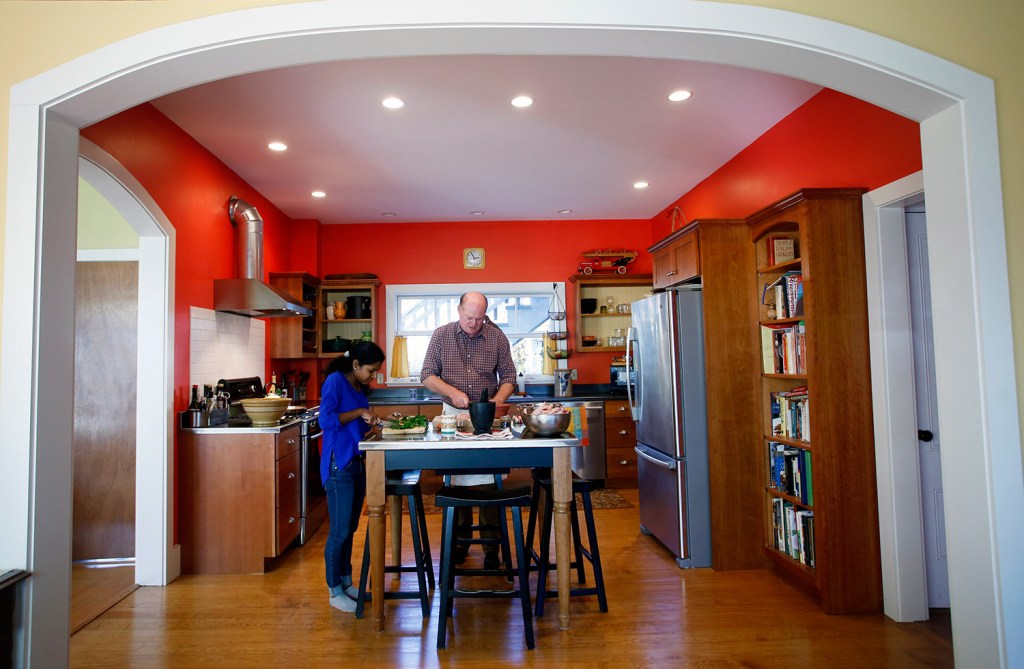
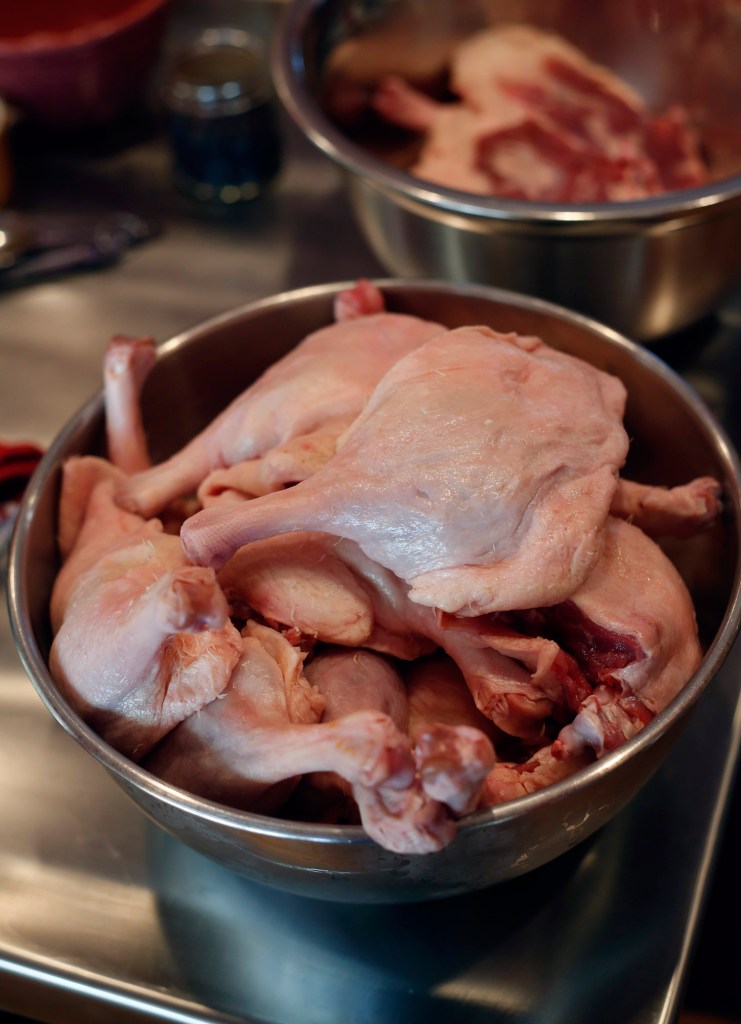
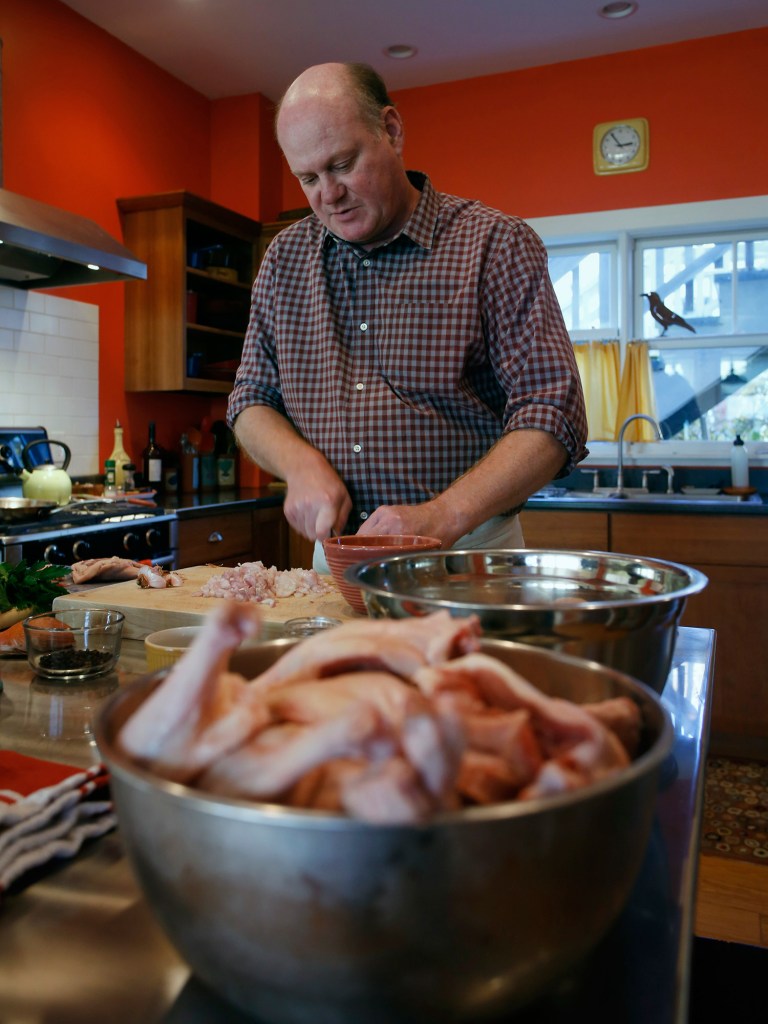
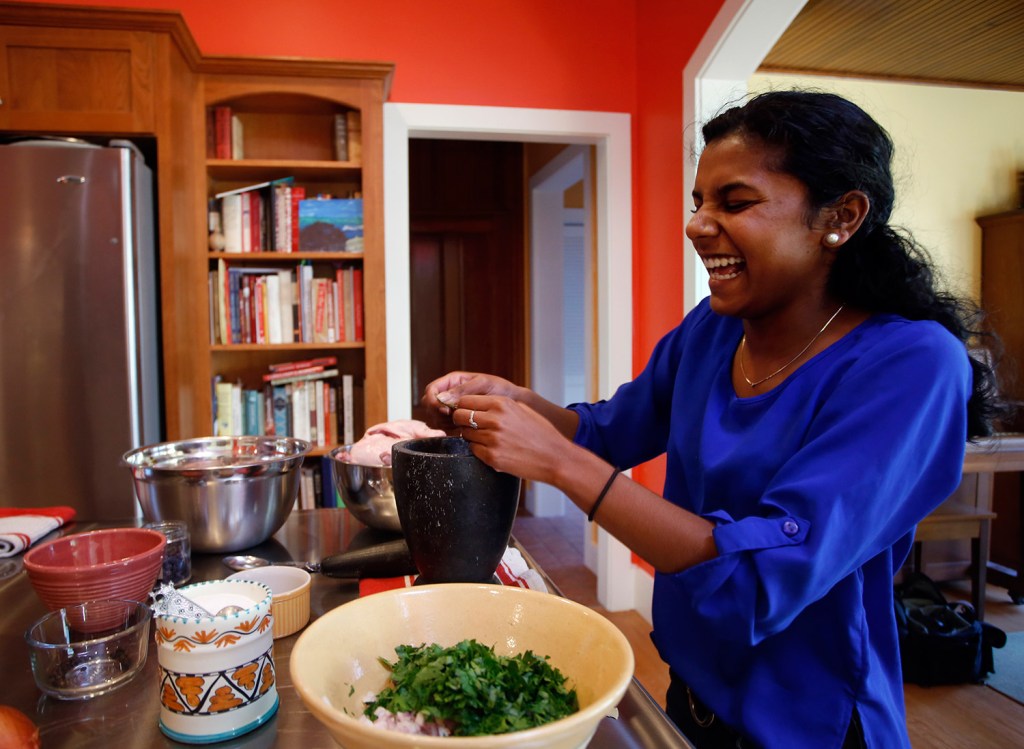
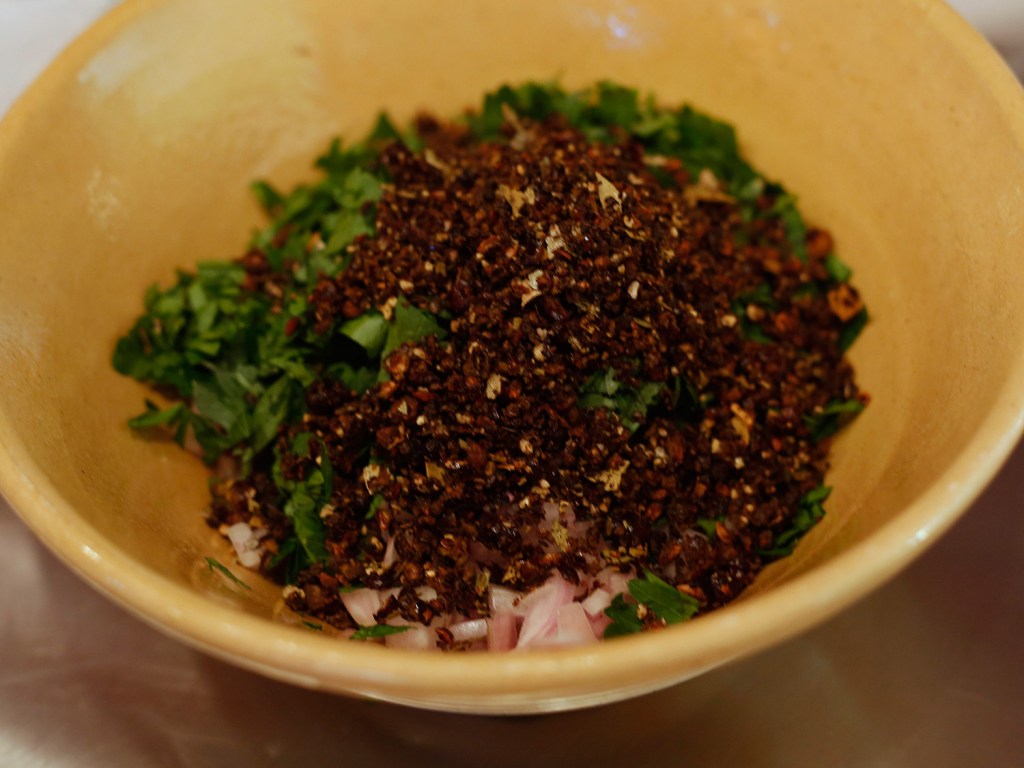
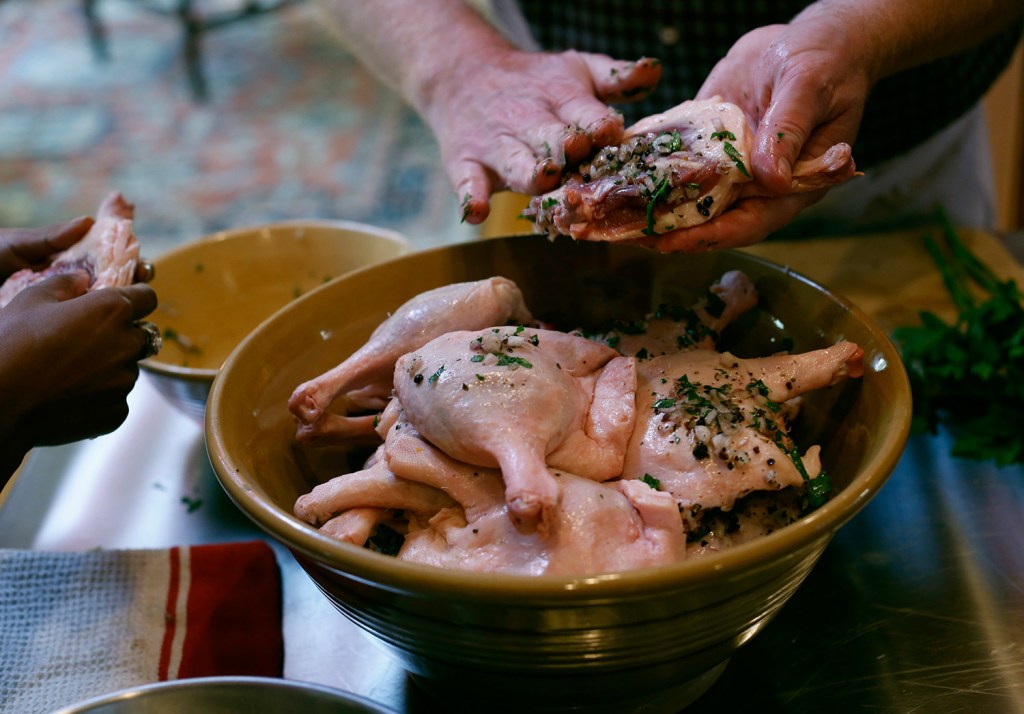


Comments are no longer available on this story